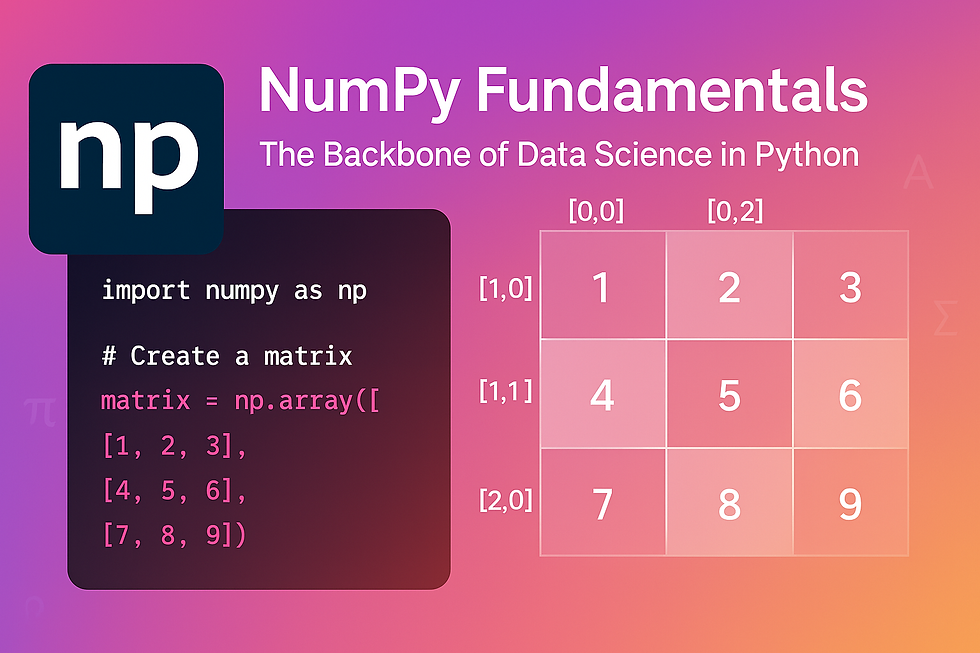AI Agents: How to Build Digital Workers
- Subodh Oraw

- Dec 27, 2024
- 4 min read

The world is moving toward automation at an unprecedented pace, and AI agents—often called digital workers—are at the forefront of this revolution. These intelligent, software-based entities can execute tasks, learn from data, and adapt to new challenges, making them indispensable in today’s digital economy. In this blog, we’ll dive deep into what AI agents are, their components, benefits, and, most importantly, how you can create and deploy your own digital workers.
What Are AI Digital Workers?
AI digital workers are software-based systems designed to perform tasks autonomously or semi-autonomously. They combine machine learning, natural language processing (NLP), and workflow automation to mimic human-like decision-making and execution processes. Unlike traditional automation tools, AI agents can understand context, make informed decisions, and continuously improve their performance.
Key Characteristics of Digital Workers:
Cognitive Abilities: They process and interpret data, often in real-time.
Task Automation: They execute repetitive tasks, freeing up human workers for more strategic roles.
Integration Capability: They seamlessly integrate with existing tools and workflows.
Learning and Adaptation: Through machine learning, they adapt and become more efficient over time.
Why AI Digital Workers Are Essential
Enhanced Productivity: AI agents can operate 24/7 without breaks, significantly improving operational efficiency.
Cost Savings: By automating repetitive tasks, businesses can save on labor costs and redirect resources to strategic initiatives.
Improved Customer Experience: AI agents offer instant responses and personalized interactions, boosting customer satisfaction.
Scalability: Businesses can scale operations without a proportional increase in human labor.
Data-Driven Decision Making: AI agents analyze vast amounts of data to provide actionable insights.
Key Components of AI Digital Workers
To create effective digital workers, you’ll need to understand their foundational components:
1. Natural Language Processing (NLP)
NLP enables AI agents to understand, interpret, and respond in human language. Tools like OpenAI GPT, spaCy, or Hugging Face provide advanced NLP capabilities.
2. Machine Learning (ML)
ML allows digital workers to analyze patterns, make predictions, and improve their performance over time. Libraries like TensorFlow and PyTorch are commonly used for building machine learning models.
3. Integration Frameworks
Digital workers must integrate with existing systems like CRM, ERP, and other enterprise software. Tools like Zapier, Microsoft Power Automate, or custom APIs are crucial for seamless integration.
4. Workflow Automation
Workflow automation tools like UiPath or Automation Anywhere define the tasks an AI agent will execute and manage their sequence.
5. User Interface (UI)
A simple, intuitive interface allows users to interact effectively with digital workers, whether it’s a chatbot window, a dashboard, or voice commands.
How to Build AI Digital Workers
Here’s a step-by-step guide to creating your own AI-powered digital worker:
1. Identify the Problem
Start by defining the tasks or workflows you want to automate. Common areas include:
Customer support.
Data entry and processing.
Marketing campaign management.
Order tracking and fulfillment.
2. Gather the Necessary Tools and Resources
AI Frameworks: OpenAI API for language-based tasks.
Automation Platforms: UiPath for workflow automation.
Data Storage: Cloud databases like AWS or Google Cloud.
Visualization Tools: Tableau or Power BI for presenting insights.
3. Develop and Train the AI
Collect data relevant to the task.
Use machine learning algorithms to train the AI model.
Fine-tune the model to improve its accuracy and reliability.
4. Integrate the AI Agent
Connect the digital worker to existing tools and platforms.
Use APIs or integration services like Zapier for smooth interoperability.
5. Test and Optimize
Simulate real-world scenarios to test performance.
Identify and address any gaps in the agent’s capabilities.
Regularly update and optimize the AI to adapt to new requirements.
6. Deploy and Monitor
Launch the digital worker into your production environment.
Monitor its performance using analytics tools.
Continuously collect feedback to refine and enhance its operations.
Popular Tools and Platforms for Building Digital Workers
1. OpenAI
Best for building conversational AI agents.
Offers pre-trained models for quick deployment.
2. UiPath
Ideal for workflow automation and robotic process automation (RPA).
Supports integration with enterprise tools.
3. Zapier
Simplifies connecting different apps and automating workflows.
Great for small to medium-sized tasks.
4. Dialogflow
Google’s tool for creating intelligent virtual assistants.
Features easy integration with Google Cloud.
5. TensorFlow
Open-source library for developing ML models.
Offers flexibility for custom AI solutions.
Challenges and Considerations
While AI digital workers offer immense benefits, there are challenges to address:
Data Privacy: Ensure that sensitive information is protected.
Ethical Concerns: Avoid biases in AI algorithms.
Implementation Costs: Initial setup can be expensive.
Human Oversight: Balance automation with human intervention to maintain quality.
Continuous Improvement: AI agents require regular updates to stay effective.
Applications Across Industries
Customer Support: AI chatbots for instant responses.
Marketing: Automated campaign management and personalization.
Healthcare: Scheduling appointments and managing patient data.
E-commerce: Order tracking, inventory management, and product recommendations.
Finance: Fraud detection and automated reporting.
Conclusion: Embrace the Future
AI digital workers are transforming how businesses operate by automating repetitive tasks, enhancing decision-making, and improving efficiency. Building your own digital worker is no longer a far-fetched idea; with the right tools and a clear plan, you can create AI agents that drive innovation and deliver measurable results.
Start your journey today by identifying tasks you want to automate and exploring the tools and platforms that suit your needs. The future of work is here, and it’s powered by AI!
-Photoroom.png)



Comments